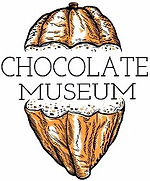

Week 8 - Assimilation
H for Hans Sloane, Health & Herbarium
Sir Hans Sloane (1660-1753) was doctor, botanist and collector of Irish Scottish descent.
Sloane studied medicinal plants and got his medical degree in France in 1683. He then came back to England in 1684 and continued his botanical studies. He commenced a private medical practice at a time when new forms of medicine were moving away from magic. Sloane became famous for combining scientific methods and herbal remedies.
Soon after, as a professional physician, and member of the Royal Society and Royal College of Physicians, he was invited to Jamaica in 1687 as a doctor to the British governor.
Sloane documented the cultivation and preparation of cocoa in his herbarium, getting specimens such as leaves and flowers, and gathering information from the slaves. He also acquired notes from Francisco Hernandez, who in 1570, as a Spanish naturalist, had taken extensive notes on the medicinal properties of a drink known as cacahoaquahuitl (a version of drinking chocolate) which he translated and quoted in his own “Natural History” published in 1707. Sloane was also very interested in cocoa being used as a currency, which he also wrote about.
He described cocoa as: “...a dirty colour, nauseous, hard to digest, unwilling to allow weak stomachs to use it. If taken warm however, it proves beneficial”. Sloane developed a recipe using milk and egg, called “the English way”, preferring it plain in comparison to the “Spanish way” which was made with spices.
He soon realised that children in Jamaica drank it as commonly as English children fed on milk. He was favourable for the use of chocolate as a health food, so he experimented by sweetening medicines with chocolate, believing it stopped dysentery and provided essential nourishment.
Back in London in 1689, he opened his medical practice, and soon became the doctor to the Royal Family, combining the bleeding method with herbal medicine. Chocolate covered medicine was a very lucrative activity too. He became involved in the slave trade himself from 1695, profiteering from Jamaican plantations and financial stocks, which also enabled him in the end to deliver his medicine to the poor.
In 1721, due to contagious fevers spreading, he imposed a quarantine very similar to ours in 2020, stopping merchant and commercial activities, and he contributed to vaccines such as the smallpox inoculation.
After Sloane’s death, chocolate brands such as “Sir Hans Sloane's Milk Chocolate” and “Sir Hans Sloane's Medicated Milk Chocolate” were sold. A century later, Cadbury used it to promote his own drinking chocolate, and his name is still used as a brand today.
References from Collecting the World: The Life and Curiosity of Hans Sloane
By James Delbourgo
To download files
BUTTONS



A-Z MENU
LETTER I
We thank you for your participation,
Programme in partnership with Melange Chocolate
Principal Sources:
"The True history of Chocolate" Thames & Hudson
"Encyclopedie du chocolate et de la confiserie" AFCC
Collecting the World: The Life and Curiosity of Hans Sloane By James Delbourgo




